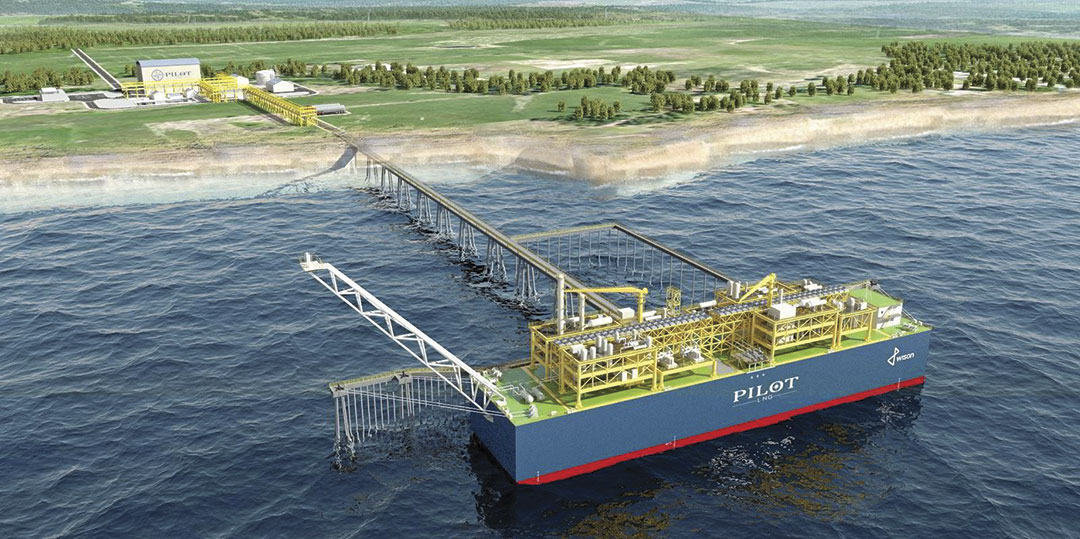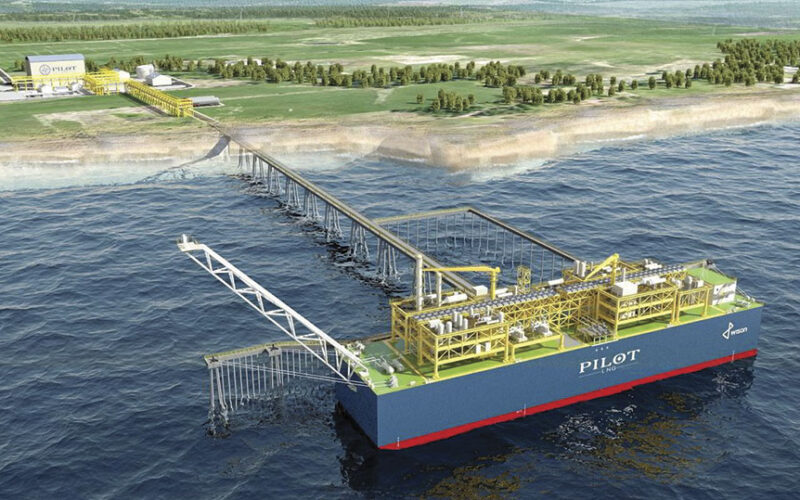
Houston, Tx.-headquartered energy company Pilot LNG and Seapath, a maritime subsidiary of the Libra Group, have formed a joint venture partnership to develop, construct, and operate the first dedicated liquefied natural gas bunkering facility (LNG) on the U.S. Gulf Coast.
Slated for construction in the Galveston Bay area, the $150 million facility will provide fuel for LNG-powered vessels and is expected to begin operations beginning in mid-2026.
The planned facility is the first in a series of investments by both companies to “create a network of LNG facilities in areas of unmet need in the United States.”
“Seapath is dedicated to investing across the marine infrastructure space and will provide strong financial backing to Pilot’s LNG bunker projects,” said Jonathan Cook, CEO of Pilot. “We look forward to working closely with Seapath to support the gradual decarbonization of the marine industry.”
The partnership, he added, plans on “delivering a U.S. Gulf Coast facility in a timely manner based on the extensive development work already completed to meet the significant needs for LNG fuel, which also supports ongoing decarbonization across the industry.”
Seapath CEO Greg Otto commented on the joint venture LNG project, saying, “The infrastructure under development will provide LNG to a growing market seeking cleaner marine fuel, particularly as customers look for economical ways to comply with tightening emissions regulations, including regulations set by the International Maritime Organization in 2020.”
The company, he added, “is pleased to be working with a first-class team in Pilot LNG and with some of the leading ports in the United States to bring this critical LNG bunkering infrastructure to the Gulf Coast region where there is high demand for it.”
Front-end engineering and design development for the project is reportedly ongoing. Permits from federal and state agencies to site, construct and operate the small-scale LNG terminal for marine fuel are expected to be approved by the end of this year.
Pilot and Seapath plan to announce the Final Investment Decision (FID) details of the Galveston Bay LNG project by the second half of 2024.
Alternative fuel-powered vessels account for approximately 60 percent of all new vessels ordered since 2022, according to Clarksons Research. Of those orders – primarily from major cruise lines and container carriers – roughly 80 percent are ships powered by LNG.

